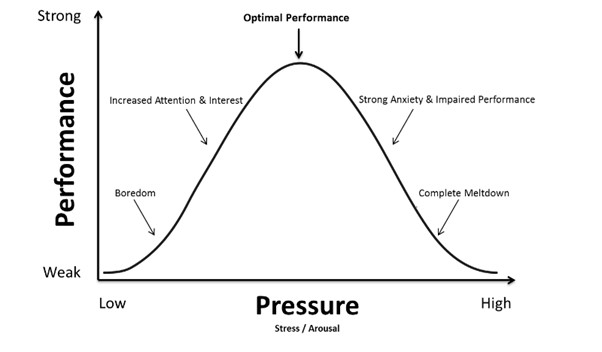Talent Pathway Activities from home Stage Two
Stage Two - Programme One
Warm Ups
1. Lunges - Forwards and Backwards Lunge
- Do a walking lunge backwards and forwards, repeat three times and rest.
- Complete 3 sets.
2. Press Up and Catch
- Start in the press up/plank position, push up and take a catch.
- Throw the ball back and jump back down into the press up/plank position.
- Repeat 10 times.
- Complete 3 sets of 10.
3. Bowling Stability
- Stand on your right leg. Bend down (staying upright) and pick up a book/cone/a sock…
- Balance it on your head and stand upright without dropping the book/cone/sock….
- Bend back down and put the book(etc) down, stand back up again.
- Turn your body 90 degrees and start again.
- When you get back to the start, rest, change to your left leg and start again.
Skillsets
1. Catching Grid
For this activity, you will need a ball, pen, paper and a partner. You could also use a bat or a tennis racquet. Using the pen and paper, draw a 5x5 grid with a stickperson in the middle to represent you. From here, the feeder can either hit or throw the ball to you in various positions. Every time you drop the ball, mark the position on the catching grid. This will highlight areas of strength and areas of weakness for you to work on in the coming weeks. You may find that catches high and to your left are most challenging or low and to your right are difficult.
Key Tips:
- Be as accurate as you can with the catching grid.
- Make the catches for all areas challenging (Think speed of catch and reaction time).
- Tennis balls can encourage ‘soft hands’.
- Think about your catching technique. (Ready Position, Fingers up vs fingers down).
2. Chin Drop Drill
For this activity, you will need a tennis ball, a bat and a target area. Set the target area up for mid-on to mid-off. Using the chin drop feed, strike the ball through the target zone in front of you. Complete this as many times as you can.
You could also keep score for two development areas:
a) Count how many balls go through the target area. (E.g. 2/6, 5/6 etc.)
b) How many balls did you strike in the middle of the bat. Be harsh and only count those that you are certain of. Try to beat your score every time. An extra challenge could be using a stump or a thin bat instead.
Key Tips:
- When striking the ball, ensure the full bat face is directed towards the target zone (I.e. it would be facing the bowler)
- Try to finish your shot with the bat following through the target zone too. Try to ensure your hands work together and the bat path is straight, rather than dominated by your strong hand.
- At the point of ball contact, try to keep you head over the ball and watching it carefully.
3. Bowling Exercises
A) Pace Bowling:
Back leg strength and stability is an important part of the bowling action. Bowlers with more back leg strength and stability are better able to maintain strong bowling positions and prevent injury. You might want to look for some examples of good back leg stability on Youtube for international bowlers.
Use these bowling stability drills below to help build up back leg strength.
Back Leg Hops – Using shoes, cones or boxes, created some hurdles that are approximately 1.5ft apart. Then, standing on your back leg (Right foot for RH bowlers, Left Foot for LH bowlers), hop over each ‘hurdle’. You will get more out of this drill if you can hop and hold a strong bowling position.
B) Spin Bowling:
As a spinner, you’re job is to ‘Spin the ball’ as much as you can. Spin creates challenges for the batter and this can be in the form of lateral movement off the surface, drift in the air or bounce. Bowling pace can also cause problems for the batter.
Watch this video from Peter Such (Spin Bowling Coach) to understand the role of a spinner and some useful bowling tips/drills.
If you have space, you may want to try some of the drills in the video. If not, here’s an activity you could try at home. You will need a tennis ball, some chalk and an area to land the ball (You could use a dark tea towel perhaps). Using the chalk, draw a seam line around the ball. Then, from one knee, bowl the ball and land it on the tea-towel. You should see a chalk mark in the direction of the seam. Is it pointing the right way, in the direction you are trying to turn it?
4. Wicket Keeping
At this early stage in the season, it is important that wicket keepers start to build up their hand eye coordination and fitness levels. Use the catch grid exercise above from a wicket keeper’s stance to identify which catching areas to focus on. You could extend this to diving range if you have a big enough and safe space.
For the fitness activity, you will need 3 balls (or rolled up pairs of socks) and a stopwatch. Place the balls in a line, with approximately 1.5m between each ball. Adopt a Wicket Keeper’s stance at the central ball and start the clock. Pick the first ball up with your right hand and side step to the left. Pick the second ball up and swap it with the first. Then side step to the 3rd ball and swap them over. Continue to side step and swap for 30 seconds, then rest and repeat.
Key Tips:
- As you feel more fatigued, it is likely that you body position will be taller. Be conscious of this and try to stay as low as possible, in a strong wicket keepers stance. Remember, your back should be straight and you body should be in a Z-position (Feet-shins-thighs-back).
- Push yourself for the whole period of time and use the rest period to recover. The harder you work now, the easier fixtures will be in the summer months.
Psychology Activity
Top athletes in all sports have excellent psychological skills that aid their performance. In Cricket, psychology plays a crucial role in everyone’s ability to perform. This could be in the form of confidence, coping with pressure, tracking the ball, concentration and many other psychological skills – it is far more important than many players and coaches believe and is often what separates a ‘good’ player from a ‘great’ player.
One element of performance that is often forgotten about is a player’s ability to put themselves in the optimum psychological state. There are probably lots of examples where you ‘weren’t in the mood’, ‘couldn’t focus’ or even ‘felt too much pressure’ or ‘was anxious’.
The diagram below demonstrates this ‘psychological state’ in an inverted-U shape, with the x-axis (Horizontal) representing psychological arousal (stress/pressure) and the y-axis (vertical) representing performance.

As you will see, there is an optimum point on the x-axis for achieving ‘peak’ or ‘optimal’ performance. This peak may occur at slightly different stages of psychological arousal for each individual (e.g. it could be skewed to the left or right).
Activity: Getting in the ‘zone’:
a) Think about your very best performances (with bat or ball) and identify some key characteristics for that performance. Are they common characteristics with other ‘great’ performances? If they are common, keep them on the list – perhaps you can try to replicate these each time you perform.
For example, some people describe themselves as ‘confident, stubborn, proactive, instinctive, intense/relaxed, no fear of failure, motivated, taking control. You may also have some common ‘actions’, such as: loud & confident calling, decisive/proactive movements, desire to ‘be the hero’, watched the ball.
It is important to remember, there isn’t necessarily a right or wrong answer here, it is generally what works for you and where you feel your ‘optimum performance’ occurs. Identifying this can be help to understand how to prepare for matches/training.
b) Think about some of the times when you may have under-performed? Do they have common characteristics too? Would you say that you were ‘over-aroused’ or ‘under-aroused’ psychologically?
Similarly to above, some examples might include: too relaxed, lazy, felt over-nervous, afraid to fail, quiet/loud, indecisive, wondering thoughts etc.
c) Using the internet, find some strategies that may help to change your psychological state when performing. Some examples could be:
- Imagery
- Self-Talk
- Re-evaluating challenge vs threat state (more on this next time).
d) If you’re interested in more psychological theories and research based on psychological arousal and performance, the following video and article gives a nice summary of the inverted-U theory amongst others.
https://oxfordre.com/psychology/view/10.1093/acrefore/9780190236557.001.0001/acrefore-9780190236557-e-155
Bowling Tactics:
For this activity, you will need some pens and paper.
Think about our bowling (or view this as a captain) and draw a variety of field placement diagrams to discuss with your coaches when we start training. Remember, your field is fluid so you can make changes, but it’s always good to have a base plan.
You will need to consider:
a) Stage of Innings (1st Innings? 2nd Innings? Opening? Middle overs? At the death?)
b) Types of batter (Top Order? Right Hand? Left Hand? Tailenders?)
c) Your home ground (Size of boundary? Pitch type? Common wind direction? Slope?)
d) Team-mates? (Which players are fielding where? Strengths/weaknesses? Bowling partnerships?)
e) You bowling plan? (Defend? Attack?)
f) Field Restrictions? (Powerplays? Defending small total?)
g) Type of match? (20 over? 50 overs? 2-day?)
h) Your skill set? (How confident are you with your plan?)
Stage Two - Programme Two
Warm Ups:
Sideways Hurdle Step Over Drill
Using a flexiband for resistance or not…..the decision is yours.
Complete ten seconds of as many step overs as possible, using two things as hurdles…..a book, a cardboard box, your pads stacked one on top of the other…
Jump Squats
Finding some space, perform 8 successive jump squats then rest for 30 seconds. Repeat the set of 8 three times, performing 24 jump squats in total.
Plank Taps
Watch the video for plank taps and identify the appropriate challenge for you. Complete a 10-12 plank taps then rest. Try to advance to the more challenging plank taps after each set.
Skill Set: Batting – Sweep Shot
Batting against spin is one of the many challenges that batters will face during their innings. The best batters are very capable of not only staying at the crease but also scoring plenty of runs against spinners. One of the keys for this is having the skill set and ‘shot options’ to combat every type of spinner. These options can include using the feet, sweeping and depth of crease.
Developing these options is the key to success and allows batters to manipulate the field.
Options against spin:
In this activity, place a ball on a batting tee (you could use an empty loo roll or paper cup too) and strike the ball through a target zone using the sweep shot.
How to play the sweep:
Bonus Tip: Placing your back knee on the floor can provide an extra point of contact and help with balance.
Begin practicing the sweep from a kneeling position and progress this to starting from your usual batting stance. You may choose to progress this further and ask a helper to provide you with drop feeds or underarm feeds for you to sweep.
You may also wish to practice reverse sweeping, slog sweeping and paddle sweeping.
Skill Set: Pace Bowling
Bowling at home remains a challenge, however, we can isolate parts of the skill and develop these ready for returning to full bowling actions very soon. In the previous home-activities, back leg stability was the focus and should continue to be included with any practises. In this week’s activities, the wrist and ball position will be the basis for the activities.
As a pace bowler, the key skills are either swing bowling or seam bowling. Swing bowling relies on the aerodynamics of the ball in flight to create a lateral change of direction that can lead to batters misreading the line of the ball. Seam bowling is slightly different and relies on the seam coming into contact with the pitch which causes a deviation in the line (a little bit like spin). Both seam and swing bowling need a strong wrist position at ball release and some ‘backspin’ to be placed onto the ball.
Take a look at these activities and give them a go at home.
(You could use a tennis ball and masking tape to create a seam. Masking tape could also be used to make a 2 coloured ball. Alternatively, electrical tape works well for adjusting the aerodynamics and seeing the swing in action.)
Video 1:
Video 2:
Skill Set: Spin Bowling
Building upon the last ‘home activities’ session, this activity looks at bowling some spin variations.
When bowling spin, there are 4 different types of spin:
- Lateral Spin = The ball rotates like a flying saucer, causing the ball to drift or curve in the air
- Over-Spin/Top Spin = The ball rotates forwards towards the batter, causing the ball to dip faster and bounce more.
- Back Spin = The ball rotates towards the bowler, causing extended carry and a small bounce)
- Side Spin = The Ball rotates clockwise or anticlockwise, causing the ball to change direction when bouncing
In this activity, known as ‘around the world’, you can experiment with the different types of spin above. If you have a two coloured ball, this will help with identifying the outcome.
1. Bowl a ball with just lateral spin. (You should see just one side of the ball as it spins).
2. Bowl a ball with side and over spin. (The seam should be diagonal)
3. Bowl a ball with just over spin.
4. Bowl a ball with just back spin.
5. Bowl a ball with lateral spin.
6. Can you repeat the process but spin the ball in the opposite direction?
Skill Set: Fielding – Catching
To continue from the previous Home-based activity sessions, it is worth repeating the ‘catching grid’ exercise and compare any results that you have been able to record. Are your strong catching areas still strong? Are your weaker areas developing?
To build onto the catching skills, try the below reflex catching activities. You will need a helper to feed the balls to you.
a) Begin with your back to the feeder. On the “Go” command, the feeder will throw the ball towards you as you spin around. Try to spot the ball quickly and react fast enough to catch it.
b) Place 2 markers on the floor (cones/shoes etc.) about 3m apart. The feeder will need 4 or more balls for this drill. (You could use rolled up socks if you don’t have enough). The ‘feeder’ should alternate between throwing the ball over the left and right marker. The catcher should move quickly from side to side to take the catches.
c) Using 2 balls, the ‘feeder’ should stand about 2m from the ‘catcher’ with a ball in each hand, arms stretched out to each side. The ‘feeder’ will then randomly drop 1 ball and the ‘catcher’ should collect the ball before it bounces for a second time. If this is too easy or the balls are too bouncy, the ‘feeder’ could kneel down or the ‘catcher’ could start further away.
Skill Set: Wicket Keeping
Wicket Keepers can do a wide range of activities from home to develop their skills for the season.
Using the videos below, try to replicate these ‘drills’ with the help of a ‘feeder’. Try to be creative if you don’t have the right equipment. (E.g. Rolled up socks for a ball, frying pan for deflections, washing basket for stumps etc.)
Wicket Keeping Cricket Drills - Part 1 of 4 - YouTube
Wicket Keeping Cricket Drills - Part 2 of 4 - YouTube
Wicket Keeping Cricket Drills - Part 3 of 4 - YouTube
Wicket Keeping Cricket Drills - Part 4 of 4 - YouTube
Psychology
Confidence is a key contributor to sport performance. Very often, the top cricketers will be very confident in their abilities to perform with the bat, ball or in the field. This confidence has been developed over time and many of them will have worked with a sport psychologist to ‘grow’ their self-confidence.
In sport psychology, self-confidence is theorised to be influenced by:
- Performance Accomplishments (Past successful experiences)
- Vicarious Experiences (Seeing/being involved with success of others)
- Verbal Persuasion (Encouragement, Praise etc.)
- Emotional Arousal (Stress, Anxiety, ‘In the zone’)
The model above demonstrates how the 4 influencing factors can help to develop self-confidence and athletic performance as a result.
With this in mind, take some time to think about each of the 4 influencing factors and write down some thoughts that will help you to grow your confidence.
Performance Accomplishments = What was your best game? Why was it the best? Can you do this skill in training? What other times have you succeeded? What similarities are there between successes?
Vicarious Experiences = When have you helped a friend/team mate to succeed at a skill? Try to think of somebody similar in performance to you? If they can do it…so can you!
Verbal Persuasion = This could come from parents, friends, coaches, team mates etc. Think about the times when someone has said “I know you can do it” or “You’ve done it before, you can do it again” or “I believe in you”.
Emotional Arousal = Firstly, refer back to the previous “activities from home” page for a detailed explanation. Think of times when you have felt relaxed, comfortable or confident when performing your skill. What are the similarities? Did you feel “In the zone”? How did you prepare for your best performances?
Match Preparation/Warm-Up:
Everyone should be familiar with a warm-up before training or playing a fixture. A warm up is important to prepare physically and mentally. It also helps to prevent injury, which is essential for cricketers who play fixtures regularly.
Warm ups look different for every team and every individual, but there are some common themes:
- Pulse Raiser
- Dynamic Stretches
- Individual Skills
- Team Skills
As players mature and develop, coaches will often ask players to lead their own warm up and prepare themselves using activities that work for them. With this in mind, plan your own individual warm up. A good warm-up duration is usually about 90 minutes and can loosely follow the below timings:
9.15am: Arrive at Cricket Ground. Possibly some individual skills (Batting/Bowling)
9.30am: Team Pulse Raiser Activity (15 mins)
9.45am: Dynamic Stretches (15 mins)
10.00am: Drinks Break
10.05am: Team Fielding Drill (15 mins)
10.20am: Individual Fielding Stations (10 mins) & Usually Toss
10.30am: Individual Skills (Batting & Bowling) (15-20 mins)
10.45am: Prepare for game and change.
11.00am: Match Start
The above is a rough guide…you could change it and add details to describe what YOU need to do to prepare for a game.











